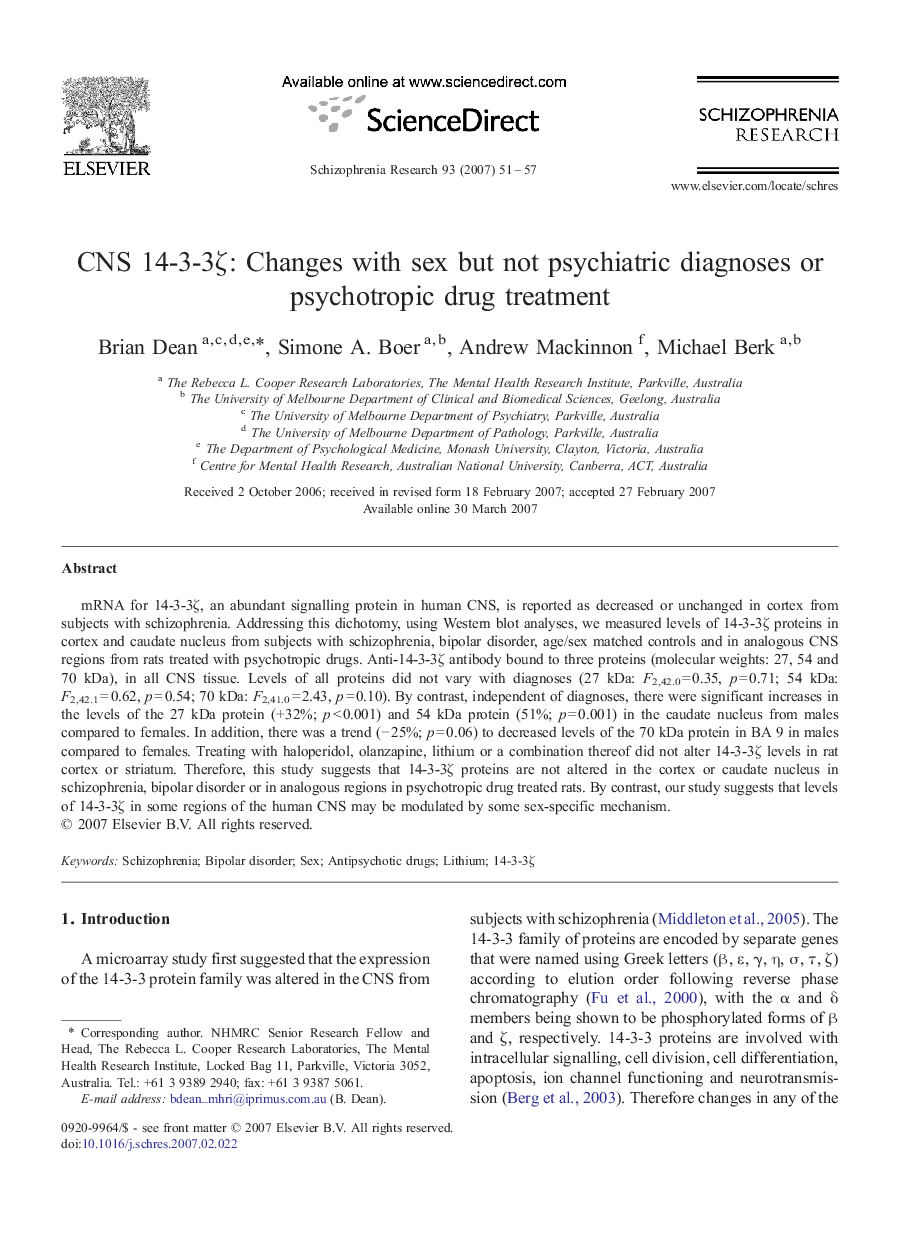| Article ID | Journal | Published Year | Pages | File Type |
|---|---|---|---|---|
| 339638 | Schizophrenia Research | 2007 | 7 Pages |
mRNA for 14-3-3ζ, an abundant signalling protein in human CNS, is reported as decreased or unchanged in cortex from subjects with schizophrenia. Addressing this dichotomy, using Western blot analyses, we measured levels of 14-3-3ζ proteins in cortex and caudate nucleus from subjects with schizophrenia, bipolar disorder, age/sex matched controls and in analogous CNS regions from rats treated with psychotropic drugs. Anti-14-3-3ζ antibody bound to three proteins (molecular weights: 27, 54 and 70 kDa), in all CNS tissue. Levels of all proteins did not vary with diagnoses (27 kDa: F2,42.0 = 0.35, p = 0.71; 54 kDa: F2,42.1 = 0.62, p = 0.54; 70 kDa: F2,41.0 = 2.43, p = 0.10). By contrast, independent of diagnoses, there were significant increases in the levels of the 27 kDa protein (+ 32%; p < 0.001) and 54 kDa protein (51%; p = 0.001) in the caudate nucleus from males compared to females. In addition, there was a trend (− 25%; p = 0.06) to decreased levels of the 70 kDa protein in BA 9 in males compared to females. Treating with haloperidol, olanzapine, lithium or a combination thereof did not alter 14-3-3ζ levels in rat cortex or striatum. Therefore, this study suggests that 14-3-3ζ proteins are not altered in the cortex or caudate nucleus in schizophrenia, bipolar disorder or in analogous regions in psychotropic drug treated rats. By contrast, our study suggests that levels of 14-3-3ζ in some regions of the human CNS may be modulated by some sex-specific mechanism.
